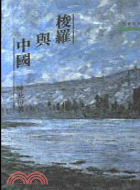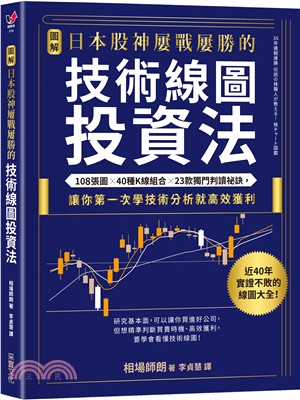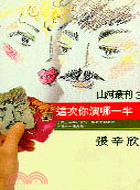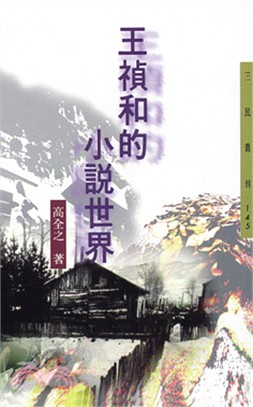Chemokine Receptors As Drug Targets
商品資訊
系列名:Methods and Principles in Medicinal Chemistry
ISBN13:9783527321186
出版社:John Wiley & Sons Inc
作者:Smit
出版日:2010/10/27
裝訂/頁數:精裝/408頁
商品簡介
作者簡介
SERGIO A. LIRA received his MD from the Universidade Federal de Pernambuco in Brazil and his PhD in physiology and pharmacology from the University of California at San Diego. He carried out his postdoctoral training at the Roche Institute for Molecular Biology in Nutley, NJ, and after this, he worked first at Bristol-Myers Squibb and then at Schering-Plough. He was elected to the Henry Kunkel Society (2006) and to the Association of American Physicians (2008). He is currently the Leona M. and Harry B. Hemsley Charitable Trust Professor of Immunology at Mount Sinai School of Medicine in New York also co-direcor of the Immunology Institute. He has organized international meetings in this field, including the 2003 Keystone Symposium on Chemokines and the 2006 Gordon Research conference on Chemotactic Cytokines. Professor Lira's research focuses on the biological role of hcemokines and their receptors.
ROB LEURS obtained his PhD under Prof. Henk Timmerman at the VU University Amsterdam, where he currently holds a chair in medicinal chemistry. He carried out postdoc in molecular biology at INSERM, Paris, with Prof. Jean-Charles Schwartz, returning to the Netherlands with a five-year scholarship awarded by the Royal Netherlands Academy of Arts and Sciences. In 2002 he was appointed full professor, also serves as director of the VU Drug Discovery Center and as director of Griffin Discoveries, a recently formed spin-off working on G protein coupled receptors. Professor Leurs's research group participates in the Leiden/Amsterdam Center for Drug Research and focuses on the medicinal chemsitry of G protein coupled receptors and their ligands as well as fragment-based drug discovery.
目次
Preface.
A Personal Foreword.
Part One Fundamentals of Chemokines and Chemokine Receptors.
1 Structural Aspects of Chemokines and their Interactions with Receptors and Glycosaminoglycans (Amanda E. I. Proudfoot, India Severin, Damon Hamel, and Tracy M. Handel).
1.1 Introduction.
1.2 Receptor Ligand Interactions.
1.3 Ligand Structure.
1.4 Receptor Structure.
1.5 Glycosaminoglycan Binding Sites.
1.6 Chemokine Analogs Research Tools and Potential Therapeutics?
2 Structural Insights for Homology Modeling of Chemokine Receptors (Leonardo Pardo, Xavier Deupi, Arnau Cordom?, Cedric Govaerts, and Mercedes Campillo).
2.1 Introduction.
2.2 Chemokines.
2.3 The Transmembrane Domain of Chemokine Receptors.
2.4 Structural and Functional Role of Internal Water Molecules.
2.5 The Structure of the Extracellular Domain of Chemokine Receptors.
2.6 The Structure of the Intracellular Domain.
2.7 The Binding of Chemokines to Chemokine Receptors.
2.8 The Binding of Small-Molecule Ligands to Chemokine Receptors.
2.9 Molecular Processes of Receptor Activation.
2.10 The Binding of the G Protein.
2.11 Receptor Oligomerization.
2.12 Conclusions.
3 Signaling Events Involved in Chemokine-Directed T Lymphocyte Migration (Stephen G. Ward).
3.1 The Role of GTPases in Chemokine-Directed Lymphocyte Migration.
3.2 Class 1 PI3Ks and their Role in Cell Migration: An Overview.
3.3 Do PI3K-Dependent Signals Contribute to T Lymphocyte Migration in Response to Chemokines?
3.4 Role of PI3K in T Lymphocyte Homing and Migration In Vivo.
3.5 Role of PI3K in Interstitial T Lymphocyte Motility.
3.6 Role of Phospholipase C and Protein Kinase C Signaling in Chemokine-Directed T Lymphocyte Migration.
3.7 Concluding Remarks and Future Directions.
4 The Atypical Chemokine Receptors (Mark D. Singh, Robert J. B. Nibbs, and Gerard J. Graham).
4.1 D6, an Atypical Receptor for Pro-Inflammatory CC Chemokines.
4.2 CCX-CKR, an Atypical Receptor for Homeostatic CC Chemokines.
4.3 CXCR7: A Second Receptor for CXCL11 and CXCL12 with Critical Roles in Development and Tumorigenesis.
4.4 DARC: A Promiscuous Pro-Inflammatory Atypical Chemokine Receptor on Red Blood Cells and Endothelial Cells.
4.5 Summary.
5 Targeting Chemokine Receptor Dimers: Are there Two (or More) to Tango? (Henry F. Vischer, Saskia Nijmeijer, and Marc Parmentier).
5.1 Introduction.
5.2 Chemokines and their Receptors.
5.3 GPCRs Exist and Function as Dimers.
5.4 Detection of GPCR Dimerization.
5.5 Chemokine Receptor Dimerization.
5.6 Constitutive Versus Induced Chemokine Receptor Dimerization.
5.7 Functional Consequences of Chemokine Receptor Dimerization.
5.8 (Patho-)Physiological Consequences of Chemokine Receptor Dimerization.
Part Two Chemokine Receptors in Disease.
6 Chemokine Receptors in Inflammatory Diseases (Aletta D. Kraneveld, Saskia Braber, Saskia Overbeek, Petra de Kruijf, Pim Koelink, and Martine J. Smit).
6.1 Introduction.
6.2 Chemokine Receptors on Inflammatory/Immune Cells.
6.3 Chemokine Receptors and Inflammatory Lung Diseases.
6.4 Chemokine and Inflammatory Bowel Diseases.
6.5 Chemokine Receptors and Rheumatoid Arthritis.
6.6 Chemokine Receptors and Atherosclerosis.
6.7 Chemokine Receptors in Multiple Sclerosis.
6.8 Chemokine Receptors and Psoriasis.
6.9 Concluding Remarks.
7 Chemokines and their Receptors in Central Nervous System Disease (Knut Biber and Hendrikus W. G. M. Boddeke).
7.1 Introduction.
7.2 Families of Chemokines.
7.3 Chemokine Pharmacology.
7.4 Chemokines and Chemokine Receptors: A Complex System.
7.5 The Role of the Chemokinergic System in Multiple Sclerosis and Experimental Autoimmune Encephalitis.
7.6 The Role of Chemokines in Brain Ischemia.
7.7 Chemokines in HIV-Associated Dementia.
7.8 Chemokines in Neuropathic Pain.
7.9 Conclusions.
8 Chemokines and Cancer Metastasis (Amanda Burkhardt and Albert Zlotnik).
8.1 Introduction.
8.2 CXCR4 and CCR7 Receptors Play Special Roles in Cancer Metastasis.
8.3 Retrospective Clinical Data Supports a Role for Chemokines in Cancer Metastasis.
8.4 How Does the CXCR4/CXCL12 Axis Influence the Development of Metastatic Lesions?
8.5 CXCR4 is a Key Player in the Development of Zebrafish; Role of CXCR7.
8.6 The CXCR4/CXCL12 Axis in Stem Cell Homing in the Bone Marrow.
8.7 Conclusions and Future Directions.
9 Constitutively Active Viral Chemokine Receptors: Tools for Immune Subversion and Pathogenesis (David Maussang, Gerold Bongers, Sergio A. Lira, and Martine J. Smit).
9.1 Introduction.
9.2 Herpesviruses and Viral Diseases.
9.3 Herpesviruses Encode Constitutively Active Viral Chemokine Receptors.
9.4 Concluding Remarks.
Part Three Targeting Chemokine Receptors.
10 CCR5 Antagonists in HIV (David C. Pryde and Christopher G. Barber).
10.1 Introduction.
10.2 CCR5 Antagonist Programs.
10.3 Molecular Interactions and Binding Modes of CCR5 Receptor Antagonists.
10.4 Resistance to CCR5 Receptor Antagonists.
10.5 Outlook.
11 CXCR4 as a Therapeutic Target (Ken Y.C. Chow and Fran?oise Bachelerie).
11.1 Biology and Physiological Role of CXCR4.
11.2 Patho-Physiological Role of CXCR4: Potential as a Therapeutic Target.
11.3 Concluding Remarks.
12 Low Molecular Weight CXCR2 Antagonists as Promising Therapeutics (Katsuhiro Mihara and Jac Wijkmans).
12.1 Introduction.
12.2 CXCR2 Ligands and Signal Transduction.
12.3 Biological Functions.
12.4 CXCR2 in Inflammatory Disorders.
12.5 Low Molecular Weight CXCR2 Antagonists.
12.6 Challenges and Future Perspectives.
13 Therapeutic Targeting of the CXCR3 Receptor (Maikel Wijtmans, Iwan J. P. de Esch, and Rob Leurs).
13.1 The CXCR3 Receptor.
13.2 CXCR3 as a Potential Drug Target.
13.3 The Development of CXCR3 Antagonists.
13.4 CXCR3 Antagonists in Disease Models and in the Clinic.
13.5 Conclusion and Outlook.
14 Targeting CCR1 (Richard Horuk).
14.1 Introduction.
14.2 CCR1 as a Drug Target.
14.3 CCR1 Antagonists.
14.4 Conclusions.
15 Targeting CCR3 (James Edward Pease).
15.1 Introduction.
15.2 CCR3 and the Eotaxin Family of Chemokines.
15.3 Structure Function Studies of CCR3 and its Ligands.
15.4 CCR3 and its Ligands in the Pathogenesis of Allergic Disease.
15.5 Targeting CCR3 Function.
15.6 Small-Molecule CCR3 Antagonists with In Vivo Activity.
15.7 Summary.
16 Chemokine Binding Proteins as Therapeutics (Ali Alejo and Antonio Alcami).
16.1 Immune Modulation by Secreted Chemokine Binding Proteins (CKBPs).
16.2 Viral CKBPs (vCKBPs).
16.3 The Schistosoma mansoni CKBP.
16.4 Evasins, a Family of CKBPs from Ticks.
16.5 Advantages and Limitations of the Use of CKBPs as Therapeutics.
Index.
主題書展
更多書展本週66折
您曾經瀏覽過的商品
購物須知
外文書商品之書封,為出版社提供之樣本。實際出貨商品,以出版社所提供之現有版本為主。部份書籍,因出版社供應狀況特殊,匯率將依實際狀況做調整。
無庫存之商品,在您完成訂單程序之後,將以空運的方式為你下單調貨。為了縮短等待的時間,建議您將外文書與其他商品分開下單,以獲得最快的取貨速度,平均調貨時間為1~2個月。
為了保護您的權益,「三民網路書店」提供會員七日商品鑑賞期(收到商品為起始日)。
若要辦理退貨,請在商品鑑賞期內寄回,且商品必須是全新狀態與完整包裝(商品、附件、發票、隨貨贈品等)否則恕不接受退貨。























